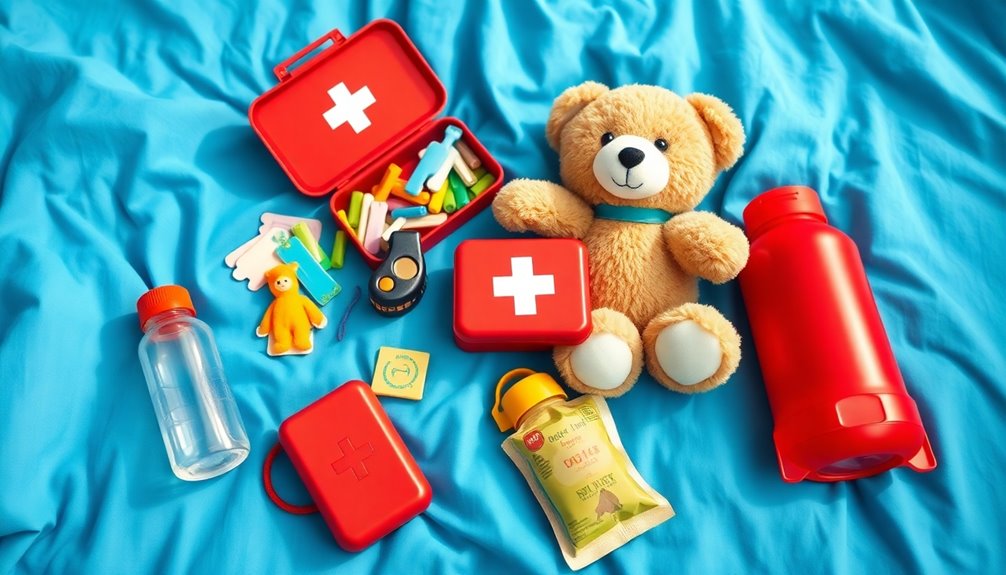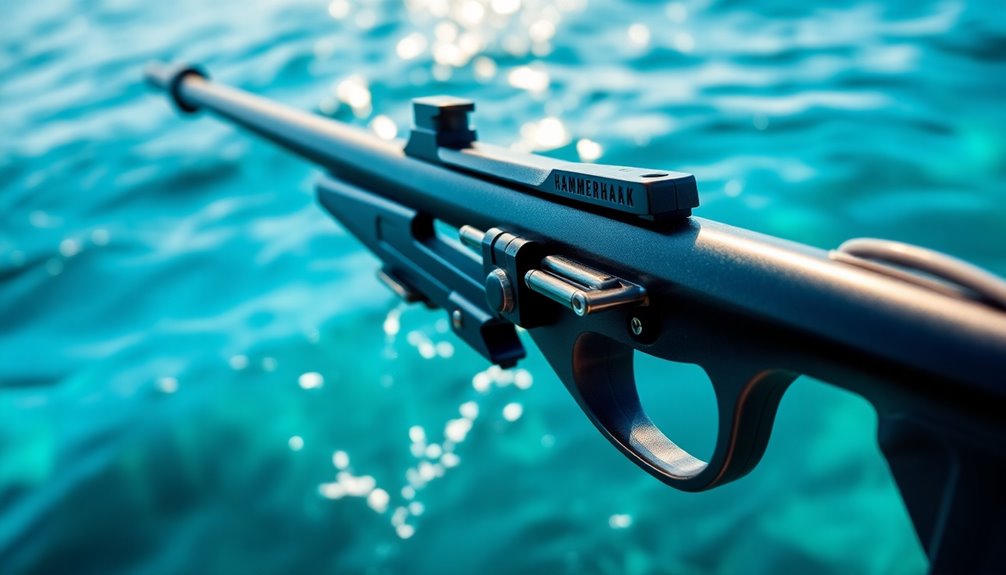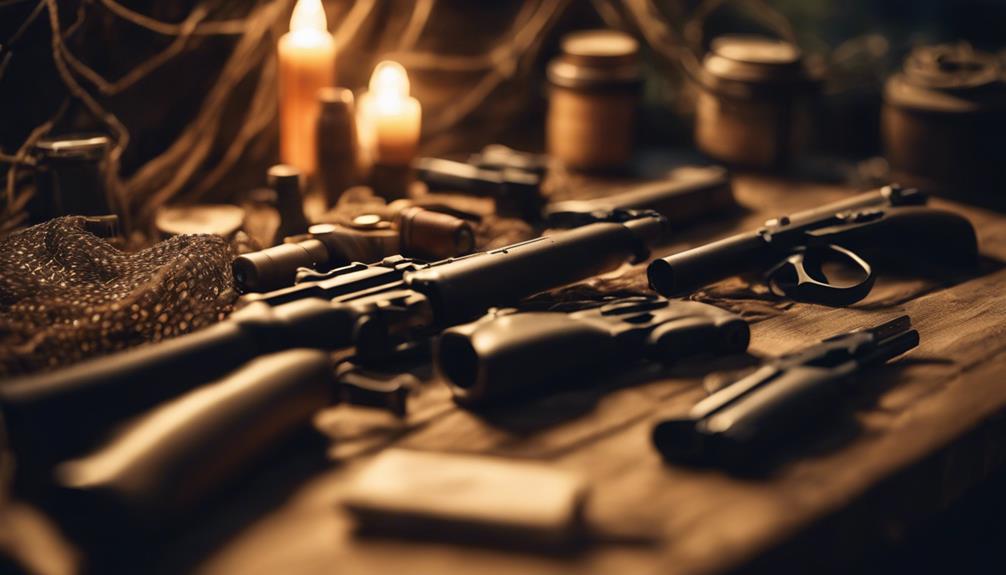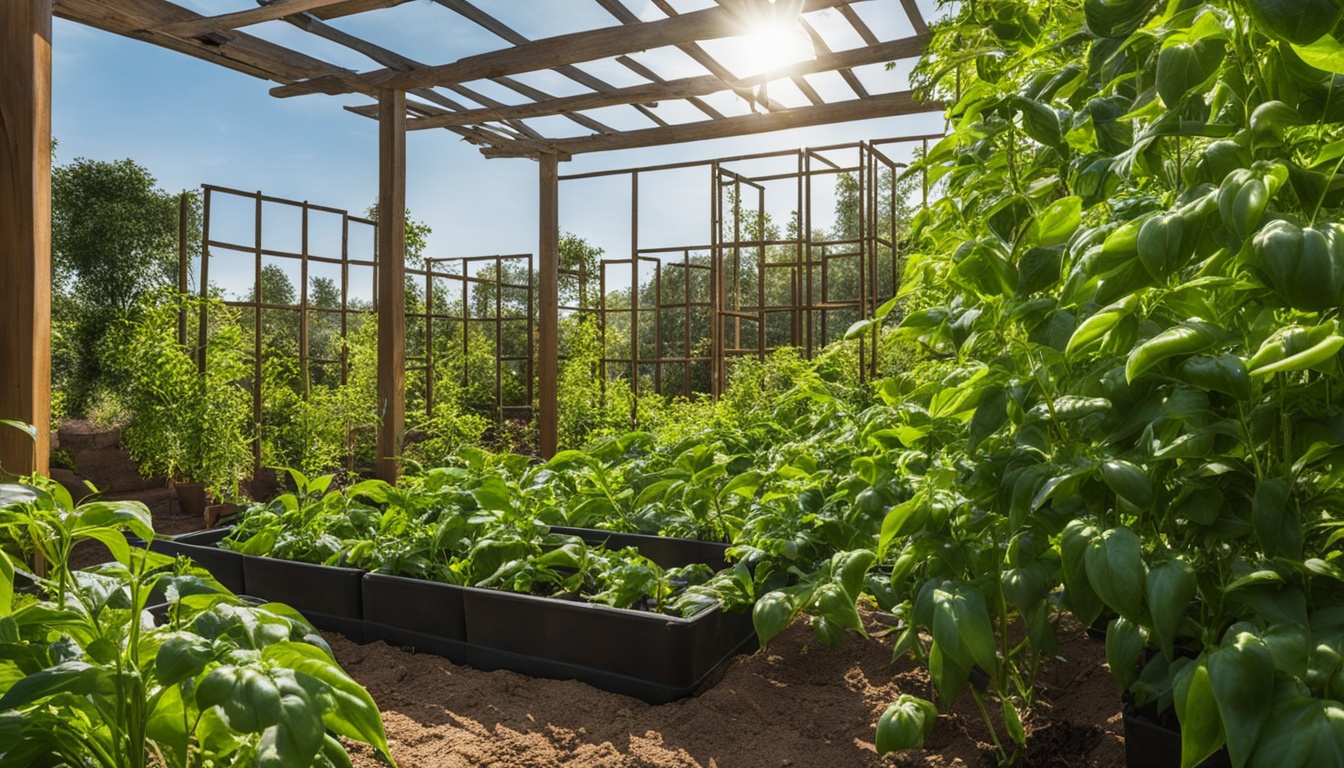When preparing an emergency kit for kids, include essential supplies like non-perishable food, at least three gallons of water, and a thorough first aid kit. Don't forget hygiene items, such as wipes and hand sanitizer, as well as comfort items like favorite toys and books. Equip your kit with communication tools like walkie-talkies and whistles for signaling help. Include clothing appropriate for the weather and a sturdy tent for shelter. Regularly check and update the kit to keep everything safe and functional. Want to learn how to tailor your kit for specific needs? There's more to explore!
Key Takeaways
- Pack non-perishable food and a three-day water supply to keep kids nourished and hydrated during emergencies.
- Include essential hygiene items like wet naps, hand sanitizer, and personal care products for cleanliness.
- Add comfort items such as favorite toys and snacks to help alleviate anxiety and keep kids engaged.
- Equip the kit with communication tools like walkie-talkies and whistles for effective signaling in emergencies.
- Prepare personalized medical supplies and a care plan for children with unique medical needs to ensure their safety.
Essential Supplies Overview
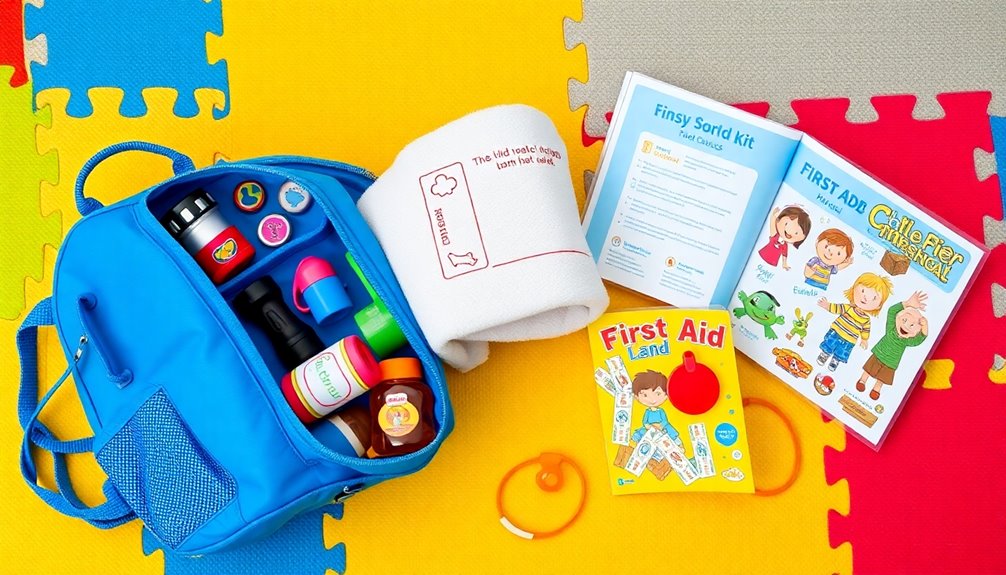
When preparing an emergency kit for kids, it's essential to include important supplies that cater to their specific needs. Start with non-perishable food items like Datrex US Coast Guard approved food rations, ensuring your child has enough to eat. Don't forget a minimum three-day supply of water packs to keep them hydrated. If you have infants, include ready-to-feed infant formula in single-serving cans or bottles, as well as powdered formula and necessary preparation materials. For a fun treat, consider adding astronaut ice cream or premium chocolate.
Next, equip your kit with crucial first aid and medical supplies. A thorough first aid kit should include band-aids, gauze pads, and antiseptic wipes. Pack medications like acetaminophen, ibuprofen, and specific infant pain relievers to address common ailments. Additionally, consider including a customizable monogram option to make the kit feel personal and unique for your child.
Personal and Hygiene Items
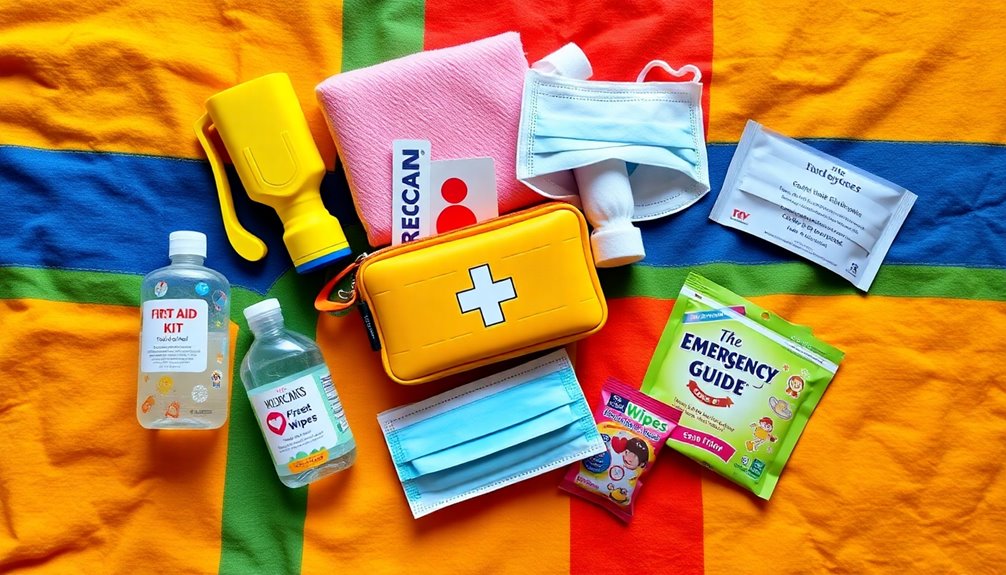
When packing your emergency kit, don't forget essential hygiene supplies to keep your kids clean and comfortable. Items like wet naps, hand sanitizer, and toilet paper are vital for maintaining personal hygiene during stressful times. Adding comfort items, such as favorite wipes or soothing lotions, can help ease your child's anxiety in an emergency situation. Additionally, consider including nut-free food options in the kit, like energy bars, to ensure your child has access to sustenance during an emergency. Regularly checking and updating your kit can help you control pet hair from accumulating on any items, especially if you have pets at home.
Essential Hygiene Supplies
In an emergency, having essential hygiene supplies for kids can make a significant difference in their comfort and well-being. When you're preparing your emergency kit, including these hygiene items guarantees your children stay clean and healthy, even in challenging situations.
- Toothbrush and toothpaste: Keeping those little teeth clean is vital.
- Hand sanitizer: A quick way to kill germs when soap and water aren't available.
- Diapers and wipes: Essential for maintaining hygiene for your little ones.
Make certain you have enough supplies to last at least a few days. Diaper rash cream and baby lotion can soothe sensitive skin, while a pack of moist towelettes is great for quick clean-ups. It's also important to regularly check and update your kit to ensure all items are in good condition and ready for use. Don't forget to include re-sealable plastic bags for any dirty diapers or clothes, keeping your kit organized and odor-free.
Comfort Items for Kids
Comfort items play an essential role in helping kids feel secure during emergencies. These familiar objects can provide emotional support, distraction, and a sense of normalcy. When packing an emergency kit, consider including a mix of personal and soothing items that resonate with your child. Emergencies can lead to lifelong trauma in children, so including items that help distract and comfort them is crucial. Additionally, recognizing the importance of self-regulation can help children manage their emotions during stressful situations.
Here's a handy table outlining key comfort items to include:
| Type of Item | Examples |
|---|---|
| Personal Comfort | Family photos, favorite toys, books |
| Distraction & Soothing | Light-up balls, bubbles, finger puppets |
| Emotional Support | Stickers, stress balls, journals |
| Practical Comfort | Emergency blankets, small flashlights |
Including family photos or letters can remind your child of happy times, while favorite toys can offer a tangible connection to home. Distraction items like light-up balls or bubbles can help soothe anxiety, while emotional support items encourage creative expression. Also, practical items such as emergency blankets or snacks can be comforting in their own right.
Communication Tools
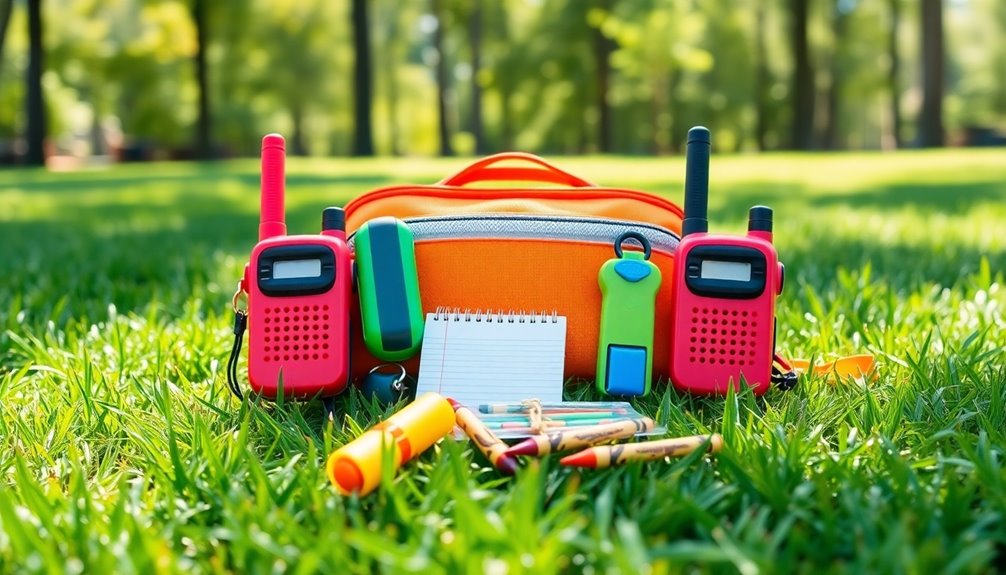
Communication tools are essential for ensuring kids can effectively respond in emergencies. Teaching them how to use these tools can make a significant difference when every second counts. Start by ensuring they know how to dial 911, provide their name, location, and the nature of the emergency. It's vital that they can access their phone and have emergency contacts saved and labeled for quick access.
Consider equipping your kids with these helpful communication tools:
- Battery-powered walkie-talkies for reliable communication when cell service fails.
- Emergency preparedness apps that guide them through different scenarios and offer instant communication options.
- Whistles for signaling help when they can't shout out loud.
Don't forget to practice these skills in a controlled environment. Show them how to text emergency services and utilize location-sharing features to send their whereabouts to trusted contacts. Teaching your kids about the importance of recognizing emergencies will help them respond appropriately in critical situations. Teach them to conserve battery life by dimming screens and closing unnecessary apps. By instilling these communication skills, you empower your children to remain calm and connected, ensuring their safety in any emergency situation.
Safety and Protection Gear
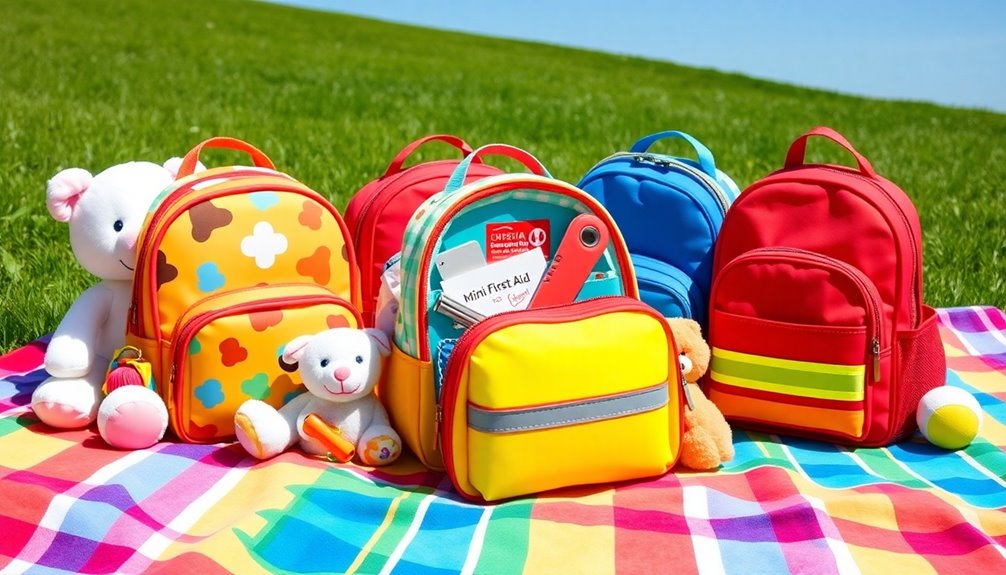
When preparing your kid's emergency kit, don't forget essential safety equipment like first aid supplies and protective clothing. You'll want to include items that guarantee warmth and shelter, such as reflective blankets and ponchos. Having the right gear can make all the difference in keeping your child safe and comfortable during unexpected situations. Additionally, consider including a Keep-Me-Safe Children's 72-Hour Emergency Survival Kit to ensure access to essential supplies tailored for children.
Essential Safety Equipment
Emergency situations can arise unexpectedly, making it crucial to have essential safety equipment ready for kids. This gear not only helps in emergencies but also guarantees you're prepared for any situation that may come your way. Here are a few key items to include in your emergency kit:
- First aid kit: Always pack a kit that includes antiseptic wipes, gauze pads, bandages, antibiotic ointment, and a CPR instruction card. This kit can be a lifesaver for minor injuries.
- Flashlight and radio: A flashlight with extra batteries and a battery-powered or hand-cranked radio will keep you informed and safe during power outages or when communication is needed.
- Whistle: A whistle is an important signaling device. In case of emergencies, kids can use it to attract attention when they need help.
Additionally, having an adequate supply of emergency food and water in the kit can ensure that kids stay nourished and hydrated during prolonged emergencies. When you equip your kids with the right safety gear, you're empowering them to handle unexpected events confidently. Always check and refresh your emergency kit regularly to guarantee that everything is in good condition and ready when needed.
Warmth and Shelter Supplies
Preparing for unexpected situations means ensuring your kids have the right warmth and shelter supplies. These items can make a significant difference in keeping your family safe and comfortable during emergencies. Start with a sturdy tent or tarp to shield your kids from harsh weather conditions. Add plastic sheeting and duct tape to create a secure shelter if needed. Don't forget local maps to help navigate to safety. Emergency thermal blankets can retain up to 90% body heat, making them a crucial addition to your supplies.
For warmth, pack emergency thermal blankets and sleeping bags for each family member. Pocket hand warmers can be lifesavers in cold weather, along with extra clothing, hats, and sturdy shoes. Fire starting tools, like waterproof matches, are essential for warmth and cooking.
Here's a quick reference table to help you gather these supplies:
| Warmth Supplies | Shelter Supplies |
|---|---|
| Emergency thermal blankets | Tents or tarps |
| Sleeping bags | Plastic sheeting |
| Pocket hand warmers | Duct tape |
| Extra clothing | Local maps |
| Fire starting tools | Scissors
Protective Clothing Items
How can you guarantee your kids stay safe and protected during an emergency? One way is by making sure they have the right protective clothing items in their emergency kits. These items not only provide safety but also comfort in stressful situations. Here are a few essential protective clothing items to include in your child’s emergency kit: sturdy shoes, long pants, and a waterproof jacket. Additionally, teaching your kids about earthquake safety tips for kids, such as dropping to the ground, taking cover, and holding on during an earthquake, can empower them to take action and stay safe in an emergency. It’s important to regularly review and update the contents of their emergency kit to ensure they have the proper clothing and tools for any situation.
Here are some essential protective clothing items you should include:
- Long-sleeved shirts: Protects against debris and harsh weather.
- Sturdy shoes: Ensures their feet are safe and stable, allowing for quick movement.
- Dust masks: Helps filter contaminated air, especially in hazardous environments.
In addition to these items, don't forget to take into account weather conditions. If you live in a colder climate, pack additional warm clothing. Each child should have a complete change of clothing to stay dry and comfortable. Including survival kits for children like the Survival Mini can also provide essential items for emergencies.
Including personal sanitation items like hand sanitizer and moist towelettes is also vital. This guarantees their hygiene is maintained even in adverse conditions. With the right protective clothing, you can help your kids feel more secure during emergencies, allowing them to focus on staying safe and calm.
Comfort and Entertainment

Creating a sense of comfort and entertainment for kids during emergencies can greatly ease their stress and anxiety. Start by including their favorite toy or a small stuffed animal in the emergency kit. This familiar item can provide a sense of security and companionship.
You can also pack a variety of entertainment items. A deck of playing cards with a guide to card games can keep them engaged for hours. Consider adding notepads, crayons, or coloring books to inspire creativity. For some physical activity, include a Frisbee or a Nerf ball. Engaging kids in structured activities can also help provide routine and predictability in emergencies.
Don't forget to incorporate no-item-needed games! Simple activities like Simon Says, I Spy, and Duck, Duck, Goose can effectively distract and entertain.
For comfort, pack some extra socks, a change of clothes, and a photo album filled with pictures of family and friends to remind them of home. Snack items like mini juice boxes and fun mints can also lift their spirits during tough times.
Unique Medical Needs

When it comes to emergency kits for kids, addressing unique medical needs is vital for their safety and well-being. You need to guarantee that your child's specific health requirements are met, especially during unexpected situations. Consider including the following items in their emergency kit:
- Catheters, feeding tubes, and syringes for those with specialized medical conditions
- A sufficient supply of prescribed medications, along with clear instructions for administration
- Medical alert bracelets or necklaces to guarantee quick identification of health issues
It's also important to keep copies of prescriptions and medical records in a waterproof container. Regularly check expiration dates to ensure that all medications and supplies are effective and safe to use. Additionally, create personalized care plans that include evacuation strategies tailored to your child's unique needs. Regularly update these plans with input from your child, parents, and healthcare providers to guarantee they remain relevant. By taking these steps, you'll help your child stay safe and secure, no matter what challenges arise.
Food and Water Considerations

In any emergency, having the right food and water can make all the difference for kids. Start with non-perishable items like dried fruit, peanut butter, and energy bars. If your child has nut allergies, take into account nut-free options like millennium energy bars. Aim for easy-to-prepare foods to guarantee quick access during stressful times. A minimum three-day supply is vital for evacuation kits, but it's wise to have up to two weeks' supply at home, especially with foods that have a shelf life of five years. Additionally, consider including items that are rich in nutritional value to help sustain energy levels.
When it comes to water, pack at least one gallon per person per day. This means having a minimum 72-hour supply in your emergency kit. Store water in its original containers, keeping it cool and dark to maintain quality. Don't forget about purification methods; they're essential if clean water isn't available. Regular updates to supplies ensure continued effectiveness, especially for children's needs.
For packaging, use compact and resealable bags for food items, and group similar items together for easy access. Remember to take into account special dietary needs, including baby food for infants and extra snacks for those with diabetes. These thoughtful preparations can keep your kids safe and comfortable during emergencies.
Emergency Signaling Devices
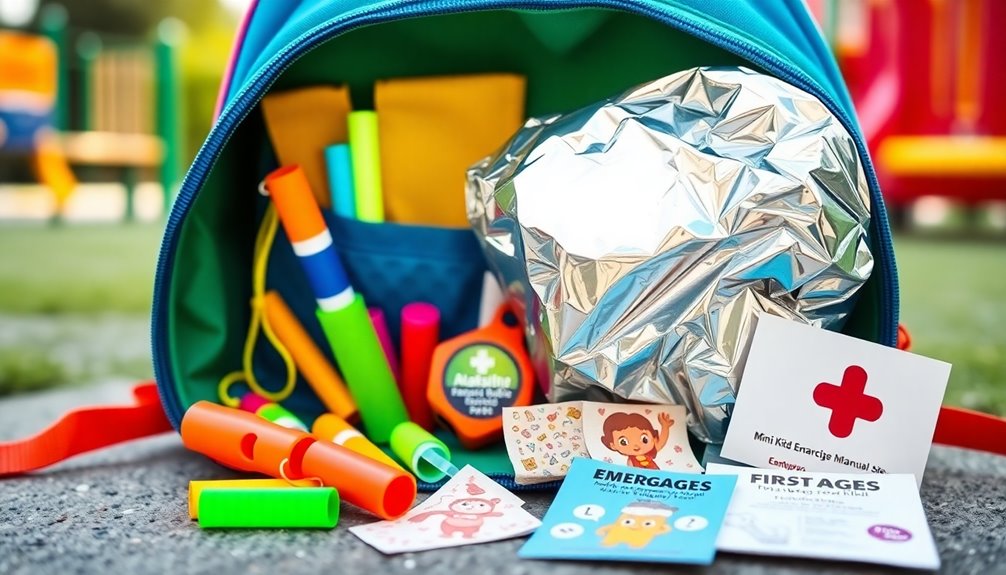
When it comes to keeping your kids safe in emergencies, communication tools are essential. Various signaling devices, from wearable safety gadgets to traditional methods, can help you stay connected and alert others to your child's location. Knowing the best practices for using these devices can make all the difference in a critical situation. Additionally, staying tuned into children's lives allows parents to better understand the environments their children frequent, ensuring they are prepared for any potential emergencies.
Importance of Communication Tools
Effective communication tools are vital for ensuring a child's safety in emergencies. These tools not only keep you connected with your child but also provide peace of mind in unexpected situations. With real-time location tracking and immediate response features, you can greatly enhance your child's safety.
Consider these important aspects of communication tools:
- Instant Alerts: Devices like the Silent Beacon allow your child to send panic alerts with just a button press, ensuring help is always within reach. Seniors texting humor can also play a role in helping children feel more connected and less anxious during emergencies.
- Two-Way Communication: Many devices enable voice communication, letting your child talk to you while waiting for assistance, reducing anxiety in stressful moments.
- Customizable Safety Zones: You can set safe zones, receiving notifications if your child steps outside these boundaries, keeping you informed and proactive.
Investing in effective communication tools means your child's safety isn't left to chance. With GPS, GSM, and WiFi capabilities, you can track their location and respond quickly if something goes wrong. These tools make sure your child is never alone, providing a safety net in both familiar and unfamiliar environments. Additionally, devices like the Filip Smartwatch combine multiple functions such as a GPS locator and cell phone, ensuring comprehensive safety and communication for your child.
Types of Signaling Devices
Emergency signaling devices play an essential role in guaranteeing safety during unexpected situations. When you're out with kids, having the right signaling tools can make a significant difference. Visual Signaling Devices (VSDs) include dive flags and surface marker buoys that help mark locations in open water. Strobe lights are handy in low visibility, while signal mirrors can attract attention over long distances. Glow sticks are lightweight, chemical lights that can signal both underwater and on the surface. Selecting devices based on specific diving environments ensures they are effective and reliable in various situations.
Audible Signaling Devices (ASDs) are just as important. Whistles are small and effective in low visibility, and dive horns produce louder sounds for long-range signaling. Dive rattles and tank bangers work well underwater, making certain your presence is known.
For more intense situations, pyrotechnic and electronic flares provide essential distress signals. Pyrotechnic flares can be used both day and night, while handheld smoke signals are great for daytime use. Personal Locator Beacons (PLBs) and satellite devices like EPIRBs can help transmit distress signals with GPS accuracy. Having these devices guarantees you're prepared to signal for help when it matters most.
Best Practices for Use
How can you guarantee your child uses emergency signaling devices effectively? Start by selecting devices that are age-appropriate and suited for their environment. Lightweight options that are easy to wear or carry will make certain your child keeps them on. Look for devices with multiple communication methods, such as GPS, GSM, and WiFi, and consider those with two-way voice capabilities for real-time contact. Additionally, ensure that the devices are equipped with compatible emergency alerting devices based on the activities your child may engage in.
Next, set up the device properly. Pair it with an app for your monitoring and create a contact list of trusted family members. Designate safe zones and configure alerts for when your child enters or exits these areas.
To make certain everyday use, teach your child how to operate the device, emphasizing emergency features. Regularly check that the device is charged and functioning correctly.
Lastly, establish clear emergency response protocols. Make sure your child knows what to do if they need to signal for help, and make certain first responders can locate them using GPS.
- Brightly colored wristbands or clips that stand out in emergencies
- Emergency contact numbers printed on the device
- Easy-to-follow instructions for using the emergency features
Clothing and Shelter Supplies
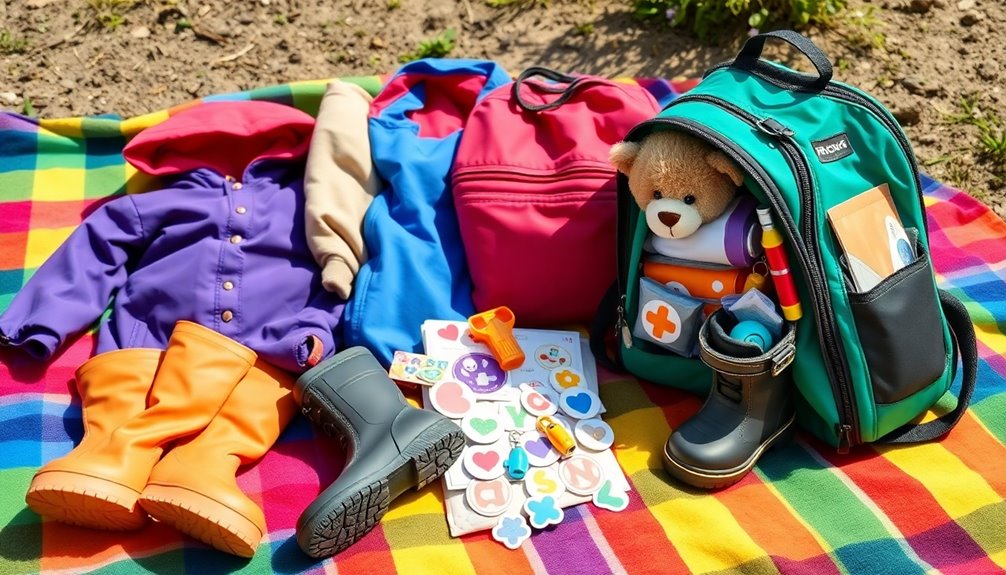
When preparing an emergency kit for kids, having the right clothing and shelter supplies is vital for their comfort and safety. Start by including extra clothes that are suitable for your child's age and the expected weather conditions. Don't forget undergarments and socks, as these can make a big difference in comfort. Sturdy shoes or comfortable footwear are essential, along with hats and gloves for cold weather. Opt for lightweight, easy-to-carry clothing to guarantee mobility.
For shelter and warmth, consider packing a Preppi Emergency Mylar Space Blanket and extra blankets or sleeping bags to keep your child warm. If you have an infant, include a portable crib or baby carrier. Plastic sheeting can serve as a makeshift shelter, while handwarmers are invaluable in cold conditions. Additionally, make sure to include well-stocked diaper bags in your kit, as they are essential for infants and young children during emergencies.
Don't overlook personal hygiene items, like baby wash, lotion, and diaper rash cream. Comfort items, such as burp rags and nonperishable snacks, should also be included. Finally, pack protective gear like a Preppi Poncho and lightweight rain jackets, along with work gloves for adult caregivers, ensuring everyone stays dry and protected.
Preparing for Different Scenarios

Preparing for different scenarios involves anticipating various emergencies and equipping your child with the right supplies. By being proactive, you can help guarantee their safety and comfort during unexpected situations. Focus on three main areas: medical supplies, food and hydration, and communication.
- A well-stocked first aid kit with band-aids, antiseptic wipes, and tweezers is essential for treating injuries and ensuring quick responses to minor emergencies.
- Non-perishable snacks like granola bars and bottled water, enough for three days.
- A flashlight with extra batteries, plus a hand-crank radio for weather updates.
For medical situations, include essential medications, a thermometer, and infant pain relievers if you have younger children. For food, choose easy-to-prepare items and guarantee you've got enough water—at least one gallon per person per day.
For communication, a battery-powered radio, cell phone with chargers, and a whistle can help your child signal for help. Remember, being prepared isn't just about having the right items; it's also about teaching your child how to use them effectively. By equipping them with the right supplies, you empower them to stay safe and secure during any emergency.
Frequently Asked Questions
What Age-Appropriate Items Should I Include for Toddlers?
When preparing for your toddler, think about items that'll keep them comfortable and entertained. Include age-appropriate toys, like soft blocks or stuffed animals. Pack snacks they enjoy, along with a spill-proof sippy cup. Don't forget a small first-aid kit with toddler-friendly supplies, like adhesive bandages and antiseptic wipes. A familiar blanket or plush can offer comfort during stressful times. Make sure you have extra clothes for unexpected messes, too!
How Can I Engage Kids in Emergency Preparedness?
To engage kids in emergency preparedness, involve them in fun activities like assembling kits together. Let them pack supplies like non-perishable food and personal comfort items. Create scavenger hunts for gathering essentials and role-play emergency scenarios to teach procedures. Use visual checklists for a more interactive experience, and encourage creativity with drawings or stories about safety. By making it enjoyable, you'll help them understand the importance of being prepared while having fun.
What Are Essential Emotional Support Items for Children?
Did you know that nearly 60% of kids experience anxiety during stressful situations? To support their emotional well-being, consider incorporating essential items into their environment. Stress balls and fidget toys can help them calm down, while sketchbooks and journals provide creative outlets. Familiar blankets or favorite toys offer comfort, and feelings check-in cards can assist in expressing their emotions. These tools can make a significant difference in helping children navigate challenging moments.
How Often Should We Update Our Emergency Kits?
You should update your emergency kits every six months. This guarantees all items are current and usable. During each update, check expiration dates on food, water, and medications. Make sure clothing sizes still fit and replace any outdated personal documents or credit cards. Don't forget to replace batteries in flashlights and other devices. Regularly reviewing your kit keeps you prepared and reassured during unexpected situations. Stay proactive and stay safe!
What Should I Do if My Child Has Allergies?
If your child has allergies, start by identifying their specific triggers and keeping a detailed list. Always carry necessary medications, like EpiPens or antihistamines, and make certain your child knows how to use them. Teach them to communicate their allergies to others, including friends and caregivers. Regularly review their allergy action plan and make certain everyone involved in their care is informed. Emergency contacts should always be accessible, in case of a reaction.
Conclusion
In preparing your kids' emergency kits, remember that nearly 40% of families haven't planned for unexpected disasters. With the right supplies, you can empower your children to stay safe and calm in any situation. Make sure to include essential items like personal hygiene products, communication tools, and comfort items. By taking these steps, you're not just packing a kit; you're giving your kids the confidence to handle emergencies effectively. Stay prepared and keep your family secure!

